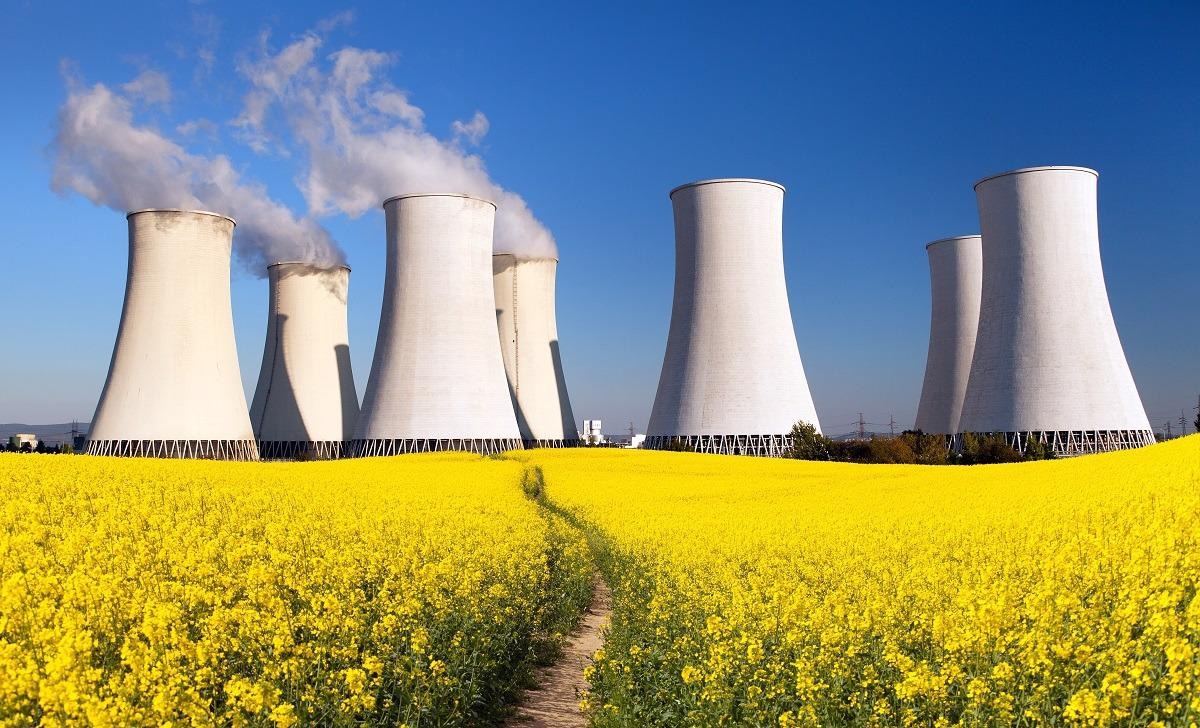According to a new study performed by Lei Duan and Ken Caldeira from the Department of Global Ecology at the Carnegie Institution for Science, nuclear power generation could play a vital role in helping the world achieve a key goal of zero carbon emissions by the middle of the century. This could be specifically done in countries with low wind resources.
 Nuclear power cooling towers. Image Credit: Shutterstock.
Nuclear power cooling towers. Image Credit: Shutterstock.
The study has been published in the journal Nature Energy. Human activity is responsible for spewing carbon pollution into the air, which tends to impact the global carbon cycle, causing warming and changing precipitation patterns.
As per the Intergovernmental Panel on Climate Change, to reduce catastrophic climate impacts, it is crucial that humanity works to keep the global mean temperature rise under 1.5 °C comparative to pre-industrial levels.
For this goal to be achieved, the panel stated that carbon emissions from across the energy system would have to reach zero by the middle of this century.
Renewable energy sources like wind and solar are great for reducing carbon-emissions. However, the wind and sun have natural variation in their availability from day to day, as well as across geographic regions, and this creates complications for total emissions reduction.
Lei Duan, Department of Global Ecology, Carnegie Institution for Science
At present, gaps present in the energy that wind and solar generate could be made up by power generation from natural gas. But in a zero-emission electricity system, another method is required to provide electricity when the wind is not blowing and the sun is not shining.
Earlier studies have illustrated that hindering 80% of carbon emissions could be achieved by ramping up solar and wind power harvesting installations. But gaps between supply and demand made by this variability in natural resources would need considerable infrastructure changes — huge expansions in energy storage and transmission abilities, as well as in energy-producing infrastructure — to achieve a 100% reduction.
To nail down that last 10 or 20% of decarbonization, we need to have more tools in our toolbox, and not just wind and solar.
Ken Caldeira, Department of Global Ecology, Carnegie Institution for Science
To evaluate the chance of nuclear power to serve this requirement, Duan and Caldeira, together with Robert Petroski of Terra Power LLC and Lowell Wood of Gates Ventures LLC, examined the solar and wind resources of 42 countries and utilized this data to assess nuclear power’s potential to offer affordable energy and substitute natural gas as a backup energy source.
Their analysis concentrated on determining which countries would benefit from examining nuclear power as an option for their energy suite sooner instead of later.
They discovered that in countries like the United States, which have the proper geographic and climate conditions for producing plentiful wind power, nuclear would not be deployed until it was required to get across the last leftover hurdles of decarbonization.
However, in countries having poorer wind resources, like Brazil, strategic usage of nuclear power could allow a quicker transition away from carbon.
Under strict greenhouse gas emission controls, reliable power generation provided by nuclear power has a lot of potential value in the electricity grid for most nations. Places with poor wind resources can benefit from nuclear earlier in the path to zero emissions, whereas places with very good wind resources would only need it to get rid of the last traces of carbon emissions.
Lei Duan, Department of Global Ecology, Carnegie Institution for Science
Caldeira added, “Our analysis looked at the cheapest way to eliminate carbon dioxide emissions assuming today’s prices. We found that at today’s price, nuclear is the cheapest way to eliminate all electricity-system carbon emissions nearly everywhere. However, if energy storage technologies became very cheap, then wind and solar could potentially be the least-cost path to a zero-emission electricity system.”
This study was supported by a gift from Gates Ventures LLC to the Carnegie Institution for Science.
Journal Reference:
Duan, L., et al. (2022) Stylized least-cost analysis of flexible nuclear power in deeply decarbonized electricity systems considering wind and solar resources worldwide. Nature Energy. doi.org/10.1038/s41560-022-00979-x.